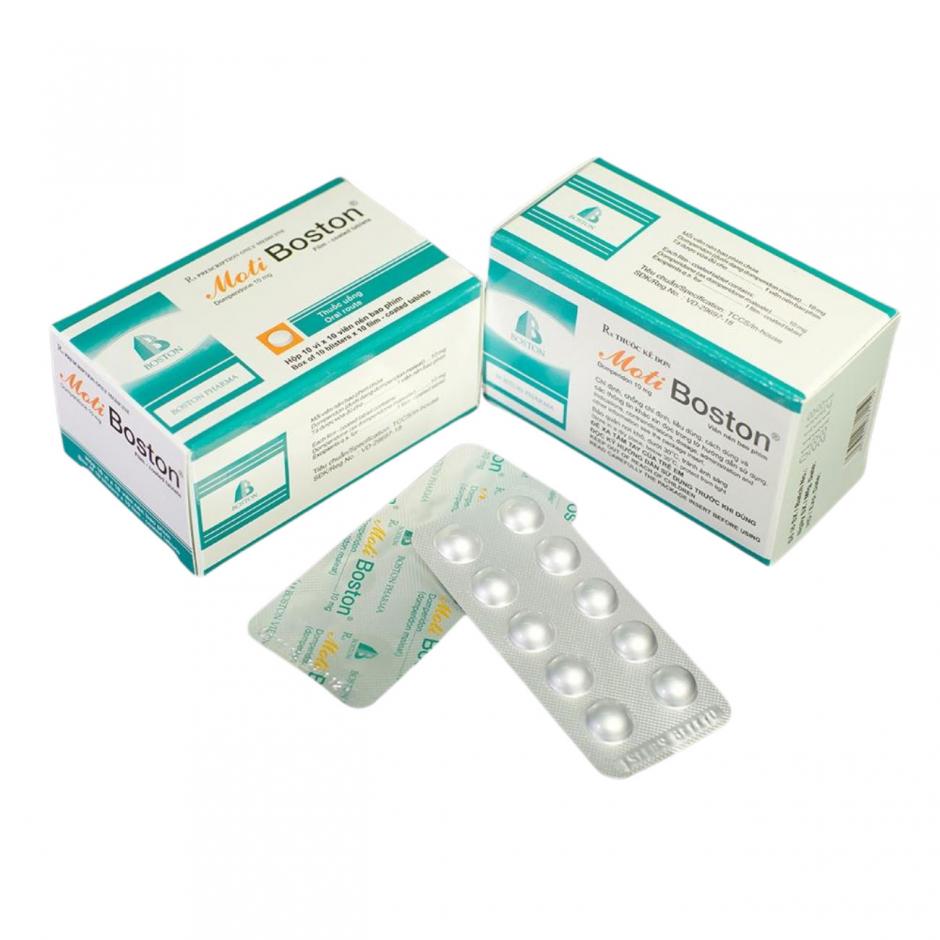DOSAGE
Isotretinoin should only be prescribed by or under the supervision of physicians with expertise in the use of systemic retinoids for the treatment of severe acne and a full understanding of the risks of isotretinoin therapy and monitoring requirements.
The capsules should be taken with food once or twice daily.
Paediatric Population
ACNE BOSTON should not be used for the treatment of prepubertal acne and is not recommended in children less than 12 years of age due to a lack of data on efficacy and safety.
Adults including adolescents and the elderly:
Isotretinoin therapy should be started at a dose of 0.5 − 1 mg/kg daily. The therapeutic response to isotretinoin and some of the adverse effects are dose-related and vary between patients. This necessitates individual dosage adjustment during therapy.
A treatment course of 16-24 weeks is normally sufficient to achieve remission.
Patients with renal impairment
In patients with severe renal insufficiency treatment should be started at a lower dose (e.g. 10 mg/day). The dose should then be increased up to 1 mg/kg/day or until the patient is receiving the maximum tolerated dose.
Patients with intolerance:
In patients who show severe intolerance to the recommended dose, treatment may be continued at a lower dose with the consequences of a longer therapy duration and a higher risk of relapse. In order to achieve the maximum possible efficacy in these patients the dose should normally be continued at the highest tolerated dose.
ADMINISTRATION
ISOTRETINOIN is administered orally.
CONTRAINDICATIONS
ISOTRETINOIN is contraindicated:
- Hypersensitivity to isotretinoin or to any of the excipients listed.
- Women who are pregnant or breastfeeding.
- Women of childbearing potential unless all of the following condition are meet. (see warning and precautions).
- Hepatic insufficiency.
- Excessively elevated blood lipid values.
- Hypervitaminosis A.
- Concomitant treatment with tetracyclines.
WARNINGS AND PRECAUTIONS
Isotretinoin is teratogenic.
Therefore, it should be contraindicated in women of childbearing potential unless all of the following conditions of the Pregnancy Prevention Programme are met:
+ She has severe acne (such as nodular or conglobate acne or acne at risk of permanent scarring) resistant to adequate courses of standard therapy with systemic anti-bacterials and topical therapy.
+ She understands the teratogenic risk.
+ She understands the need for rigorous follow-up, on a monthly basis
+ She understands and accepts the need for effective contraception, without interruption, 1 month before starting treatment, throughout the duration of treatment and 1 month after the end of treatment. At least one and preferably two complementary forms of contraception including a barrier method should be used .
+ Even if she has amenorrhea she must follow all of the advice on effective contraception.
+ She should be capable of complying with effective contraceptive measures.
+ She is informed and understands the potential consequences of pregnancy and the need to rapidly consult if there is a risk of pregnancy.
+ She understands the need and accepts to undergo pregnancy testing before, during and 5 weeks after the end of treatment.
+ She has acknowledged that she has understood the hazards and necessary precautions associated with the use of isotretinoin.
These conditions also concern women who are not currently sexually active unless the prescriber considers that there are compelling reasons to indicate that there is no risk of pregnancy.
The prescriber must ensure that:
+ The patient complies with the conditions for pregnancy prevention as listed above, including confirmation that she has an adequate level of understanding.
+ The patient has acknowledged the aforementioned conditions.
+ The patient has used at least one and preferably two methods of effective contraception including a barrier method for at least 1 month prior to starting treatment and is continuing to use effective contraception throughout the treatment period and for at least 1 month after cessation of treatment.
+ Negative pregnancy test results have been obtained before, during and 5 weeks after the end of treatment. The dates and results of pregnancy tests should be documented.
Contraception
Female patients must be provided with comprehensive information on pregnancy prevention and should be referred for contraceptive advice if they are not using effective contraception.
As a minimum requirement, female patients at potential risk of pregnancy must use at least one effective method of contraception. Preferably the patient should use two complementary forms of contraception including a barrier method.
Contraception should be continued for at least 1 month after stopping treatment with isotretinoin, even in patients with amenorrhea.
Pregnancy testing
According to local practice, medically supervised pregnancy tests with a minimum sensitivity of 25 mIU/mL are recommended to be performed in the first 3 days of the menstrual cycle, as follows.
Prior to starting therapy:
In order to exclude the possibility of pregnancy prior to starting contraception, it is recommended that an initial medically supervised pregnancy test should be performed and its date and result recorded. In patients without regular menses, the timing of this pregnancy test should reflect the sexual activity of the patient and should be undertaken approximately 3 weeks after the patient last had unprotected sexual intercourse. The prescriber should educate the patient about contraception.
A medically supervised pregnancy test should also be performed during the consultation when isotretinoin is prescribed or in the 3 days prior to the visit to the prescriber, and should have been delayed until the patient had been using effective contraception for at least 1 month. This test should ensure the patient is not pregnant when she starts treatment with isotretinoin.
Follow-up visits
Follow-up visits should be arranged at 28 day intervals. The need for repeated medically supervised pregnancy tests every month should be determined according to local practice including consideration of the patient's sexual activity and recent menstrual history (abnormal menses, missed periods or amenorrhea). Where indicated, follow-up pregnancy tests should be performed on the day of the prescribing visit or in the 3 days prior to the visit to the prescriber.
End of treatment
Five weeks after stopping treatment, women should undergo a final pregnancy test to exclude pregnancy.
Male patients:
The available data suggest that the level of maternal exposure from the semen of the patients receiving isotretinoin, is not of a sufficient magnitude to be associated with the teratogenic effects of isotretinoin.
Male patients should be reminded that they must not share their medication with anyone, particularly not females.
Additional precautions:
Patients should be instructed never to give this medicinal product to another person and should not donate blood during therapy and for 1 month following discontinuation of isotretinoin because of the potential risk to the foetus of a pregnant transfusion recipient.
Psychiatric disorders
Depression, depression aggravated, anxiety, aggressive tendencies, mood alterations, psychotic symptoms, and very rarely, suicidal ideation, suicide attempts and suicide have been reported in patients treated with isotretinoin. Particular care needs to be taken in patients with a history of depression and all patients should be monitored for signs of depression and referred for appropriate treatment if necessary. However, discontinuation of isotretinoin may be insufficient to alleviate symptoms and therefore further psychiatric or psychological evaluation may be necessary.
Skin and subcutaneous tissues disorders
Acute exacerbation of acne is occasionally seen during the initial period but this subsides with continued treatment, usually within 7-10 days, and usually does not require dose adjustment.
Exposure to intense sunlight or to UV rays should be avoided. Where necessary a sun-protection product with a high protection factor of at least SPF 15 should be used.
Aggressive chemical dermabrasion and cutaneous laser treatment should be avoided in patients on isotretinoin for a period of 5-6 months after the end of the treatment because of the risk of hypertrophic scarring in atypical areas and more rarely post inflammatory hyper or hypopigmentation in treated areas. Wax depilation should be avoided in patients on isotretinoin for at least a period of 6 months after treatment because of the risk of epidermal stripping.
Concurrent administration of isotretinoin with topical keratolytic or exfoliative anti-acne agents should be avoided as local irritation may increase.
Isotretinoin is likely to cause dryness of the skin and lips, so patients should be advied to use a skin moisturising oilment or cream and a lip balm from the start of treatment. There have been post-marketing reports of severe skin reactions (e.g. erythema multiforme (EM), Stevens-Johnson syndrome (SJS) and toxic epidermal necrolysis (TEN)) associated with isotretinoin use. Patients should be monitored closely for severe skin reactions, and discontinuation of isotretinoin should be considered if warranted.
Allergic reactions
Anaphylactic reactions have been rarely reported. Allergic cutaneous reactions are reported infrequently. Serious cases of allergic vasculitis, often with purpura (bruises and red patches) of the extremities and extracutaneous involvement have been reported. Severe allergic reactions necessitate interruption of therapy and careful monitoring.
Eye disorders
Dry eyes, corneal opacities, decreased night vision and keratitis usually resolve after discontinuation of therapy. Dry eyes can be helped by the application of a lubricating eye ointment or by the application of tear replacement therapy. Patients experiencing visual difficulties should be referred for an expert ophthalmological opinion. Withdrawal of isotretinoin may be necessary.
Musculo-skeletal and connective tissue disorders
Myalgia, arthralgia and increased serum creatine phosphokinase values have been reported in patients receiving isotretinoin, particularly in those undertaking vigorous physical activity. In some cases, this may progress to potentially life threatening rhabdomyolysis.
Bone changes including premature epiphyseal closure, hyperostosis, and calcification of tendons and ligaments have occurred after several years of administration at very high doses for treating disorders of keratinisation. The dose levels, duration of treatment and total cumulative dose in these patients generally far exceeded those recommended for the treatment of acne.
Benign intracranial hypertension
Cases of benign intracranial hypertension have been reported, some of which involved concomitant use of tetracyclines. Signs and symptoms of benign intracranial hypertension include headache, nausea and vomiting, visual disturbances and papilloedema. Patients who develop benign intracranial hypertension should discontinue isotretinoin immediately.
Hepatobiliary disorders
Liver enzymes should be checked before treatment, 1 month after the start of treatment, and subsequently at 3 monthly intervals unless more frequent monitoring is clinically indicated. Transient and reversible increases in liver transaminases have been reported. However, in the event of persistent clinically relevant elevation of transaminase levels, reduction of the dose or discontinuation of treatment should be considered.
Renal insufficiency
Renal insufficiency and renal failure do not affect the pharmacokinetics of isotretinoin. Therefore, isotretinoin can be given to patients with renal insufficiency. However, it is recommended that patients are started on a low dose and titrated up to the maximum tolerated dose.
Lipid Metabolism
Serum lipids (fasting values) should be checked before treatment, 1 month after the start of treatment, and subsequently at 3 monthly intervals unless more frequent monitoring is clinically indicated. Elevated serum lipid values usually return to normal on reduction of the dose or discontinuation of treatment and may also respond to dietary measures.
Isotretinoin has been associated with an increase in plasma triglyceride levels. Isotretinoin should be discontinued if hypertriglyceridaemia cannot be controlled at an acceptable level or if symptoms of pancreatitis occur. Levels in excess of 800 mg/dL or 9 mmol/L are sometimes associated with acute pancreatitis, which may be fatal.
Gastrointestinal disorders
Isotretinoin has been associated with inflammatory bowel disease (including regional ileitis) in patients without a prior history of intestinal disorders. Patients experiencing severe (hemorrhagic) diarrhoea should discontinue isotretinoin immediately.
High Risk Patients
In patients with diabetes, obesity, alcoholism or a lipid metabolism disorder undergoing treatment with isotretinoin, more frequent checks of serum values for lipids and/or blood glucose may be necessary.
INTERACTIONS
Vitamin A: Patients should not take vitamin A as concurrent medication due to the risk of developing hypervitaminosis A.
Tetracyclines: Cases of benign intracranial hypertension have been reported with concomitant use of isotretinoin and tetracyclines. Therefore, concomitant treatment with tetracyclines must be avoided.
Concurrent administration of isotretinoin with topical keratolytic or exfoliative anti-acne agents should be avoided as local irritation may increase.
PREGNANCY AND LACTATION
Pregnancy
Isotretinoin must not be used by female patients who are pregnant or may become pregnant.
The foetal malformations associated with exposure to isotretinoin include central nervous system abnormalities (hydrocephalus, cerebellar malformation/abnormalities, microcephaly), facial dysmorphia, cleft palate, external ear abnormalities (absence of external ear, small or absent external auditory canals), eye abnormalities (microphthalmia), cardiovascular abnormalities (conotruncal malformations such as tetralogy of Fallot, transposition of great vessels, septal defects), thymus gland abnormality and parathyroid gland abnormalities. There is also an increased incidence of spontaneous abortion.
If pregnancy occurs in a woman treated with isotretinoin, treatment must be stopped and the patient should be referred to a physician specialised or experienced in teratology for evaluation and advice.
Lactation
Isotretinoin is highly lipophilic, therefore the passage of isotretinoin into human milk is very likely. Due to the potential for adverse effects in the child exposed via mothers' milk, Isotertinoin is contraindicated during breast-feeding.
EFFECTS ON ABILITY TO DRIVE AND USE MACHINES
Isotretinoin could potentially have an influence on the ability to drive and use machines.
A number of cases of decreased night vision have occurred during isotretinoin therapy and in rare instances have persisted after therapy. Because the onset in some patients was sudden, patients should be advised of this potential problem and warned to be cautious when driving or operating machines.
Drowsiness, dizziness and visual disturbances have been reported very rarely. Patients should be warned that if they experience these effects, they should not drive, operate machinery or take part in any other activities where the symptoms could put either themselves or others at risk.
UNDESIRABLE EFECTS
Frequency are defined as: very common (≥ 1/ 10), common (≥ 1/ 100 to < 1/10), uncommon (≥ 1 / 1000 to < 1/100), rare (≥ 1 / 10000 to < 1/1000), very rare (< 1/10000); not known (can not be estimated from the available data).
|
Body System
|
Frequency
|
Undesirable Effect
|
|
Innfections
|
Very rare
|
Gram positive (mucocutaneous) bacterial infection
|
|
Blood and lymphatic system disorders
|
Very common
|
Thrombocytopenia, anaemia, thrombocytosis, red blood cell sedimentation rate increased
|
|
Common
|
Neutropenia
|
|
Very rare
|
Lymphadenopathy
|
|
Immune system disorders
|
Rare
|
Anaphylactic reactions, hypersensitivity, allergic skin reaction
|
|
Metabolism and nutrition disorders
|
Very rare
|
Diabetes mellitus, hyperuricaemia
|
|
Psychiatric disorders
|
Rare
|
Depression, depression aggravated, aggressive tendencies, anxiety, mood alterations.
|
|
Very rare
|
Suicide, suicide attempt, suicidal ideation, psychotic disorder, abnormal behaviour
|
|
Nervous system disorders
|
Common
|
Headache
|
|
Very rare
|
Benign intracranial hypertension, convulsions, drowsiness, dizziness
|
|
Eye disorders
|
Very common
|
Blepharitis, conjunctivitis, dry eye, eye iritation
|
|
Very rare
|
Papilloedema (as sign of benign intracranial hypertension), cataract, colour blindness (colour vision deficiencies), contact lens intolerance, corneal opacity, decreased night vision, keratitis, photophobia, visual disturbances, blurred vision.
|
|
Ear and labyrinth disorders
|
Very rare
|
Hearing impaired
|
|
Vascular disorders
|
Very rare
|
Vasculitis (for example Wegener's granulomatosis, allergic vasculitis)
|
|
Respiratory, thoracic and mediastinal disorders
|
Common
|
Nasopharyngitis, epistaxis, nasal dryness
|
|
Very rare
|
Bronchospasm (particularly in patients with asthma), hoareness
|
|
Gastrointestinal disorders
|
Very rare
|
Inflammatory bowel disease, colitis, ileitis, pancreatitis, gastrointestinal haemorrhage, haemorrhagic diarrhoea, nausea dry throat
|
|
Hepatobiliary disorders
|
Very common
|
Transaminase increased
|
|
Very rare
|
Hepatitis
|
|
Skin and subcutaneous tissues disorders
|
Very common
|
Pruritus, rash erythematous, dermatitis, cheilitis, dry skin, localised exfoliation, skin fragility (risk of frictional trauma)
|
|
Rare
|
Alopecia
|
|
Very rare
|
Acne fulminans, acne aggravated (acne flare), erythema (facial), exanthema, hair disorders, hirsutism, nail dystrophy, paronychia, photosensitivity reaction, pyogenic granuloma, skin hyperpigmentation, sweating increased
|
|
Not known
|
Erythema multiforme, Stevens-Johnson Syndrome, toxic epidermal necrolysis
|
|
Musculo-skeletal and connective tissue disorders
|
Very common
|
Arthralgia, myalgia, back pain (particularly in children and adolescent patients)
|
|
Very rare
|
Arthritis, calcinosis (calcification of ligaments and tendons), epiphyses premature fusion, exostosis, (hyperostosis), reduced bone density, tendonitis
|
|
Not known
|
Rhabdomyolysis
|
|
Renal and urinary disorders
|
Very rare
|
Glomerulonephritis
|
|
General disorders and administration site conditions
|
Very rare
|
Granulation tissue (increased formation of), malaise
|
|
Investigations
|
Very common
|
Blood triglycerides increased, high density lipoprotein decreased
|
|
Common
|
Blood cholesterol increased, blood glucose increased, haematuria, proteinuria
|
|
Very rare
|
Blood creatine phosphokinase increased
|
OVERDOSE AND TREATMENT
Symptom
Isotretinoin is a derivative of vitamin A. Although the acute toxicity of isotretinoin is low but signs of hypervitaminosis A could appear in cases of accidental overdose. Manifestations of acute vitamin A toxicity include severe headache, nausea or vomiting, drowsiness, irritability and pruritus. Signs and symptoms of accidental or deliberate overdosage with isotretinoin would probably be similar.
Treatment
These symptoms would be expected to be reversible and to subside without the need for treatment.
STORAGE CONDITION
In a dry place, below 30°C, protect from light.
SHELF- LIFE
36 months from the manufacturing date. Do not use after the expiry date.



_ACNE_BOSTON_900x900.jpg)






